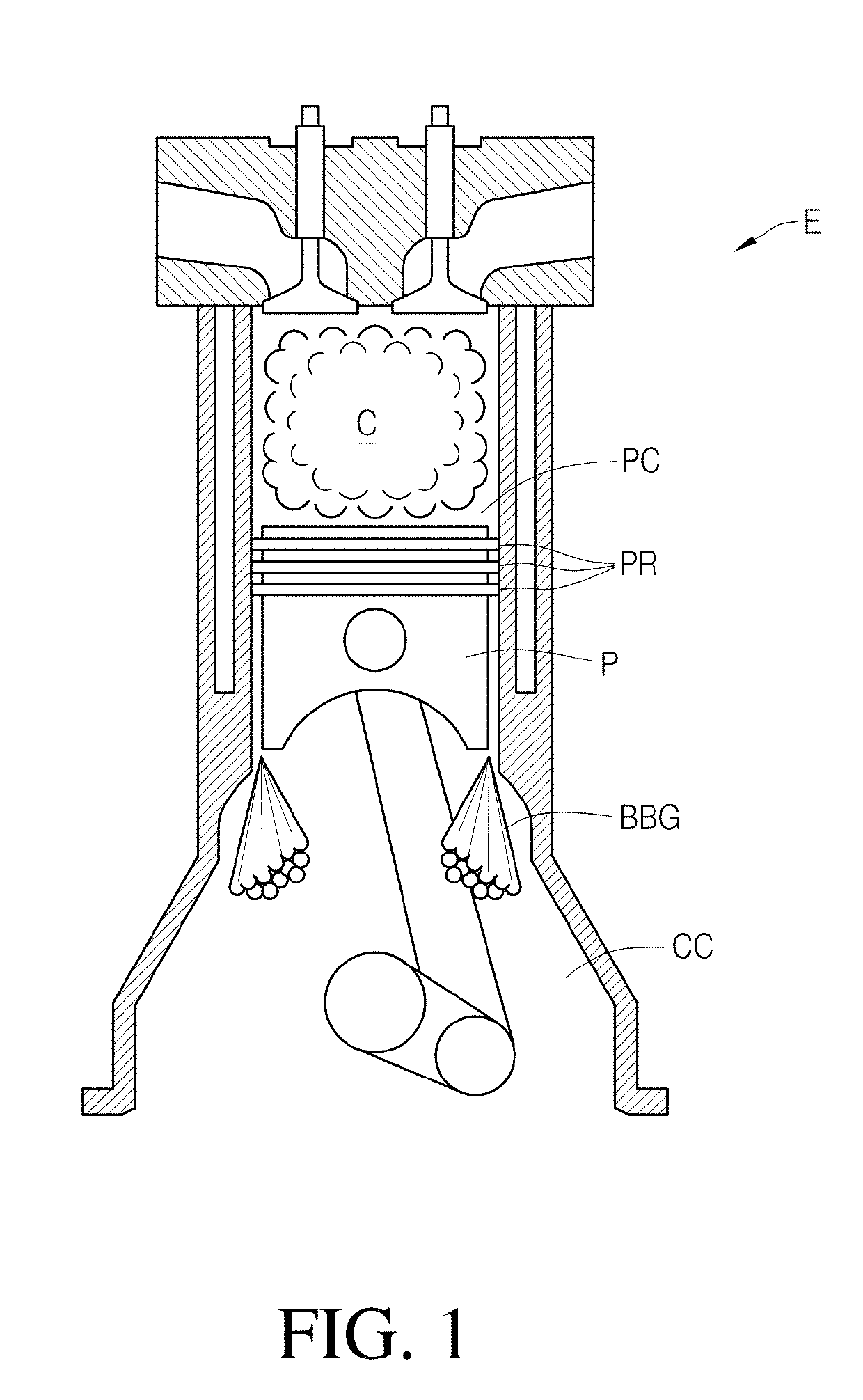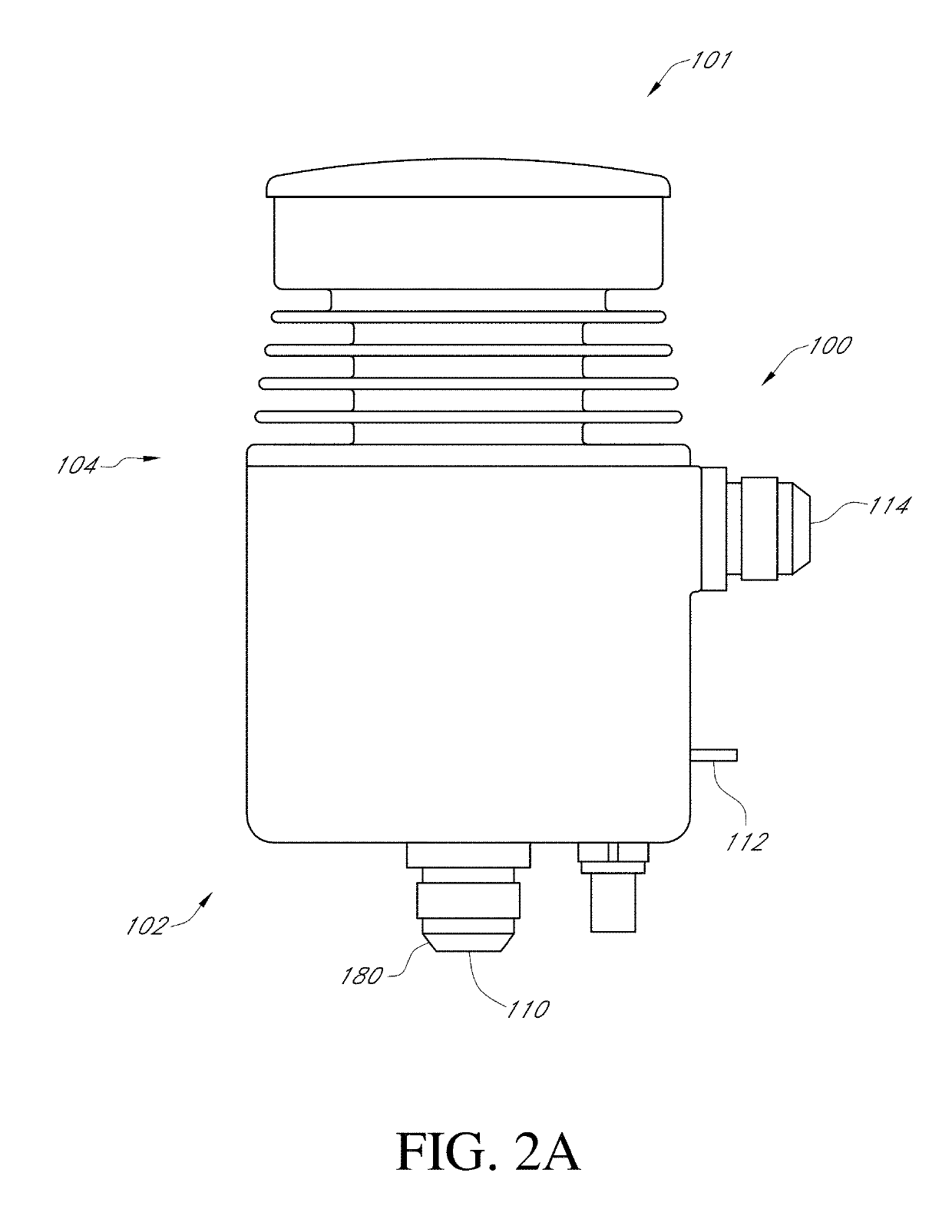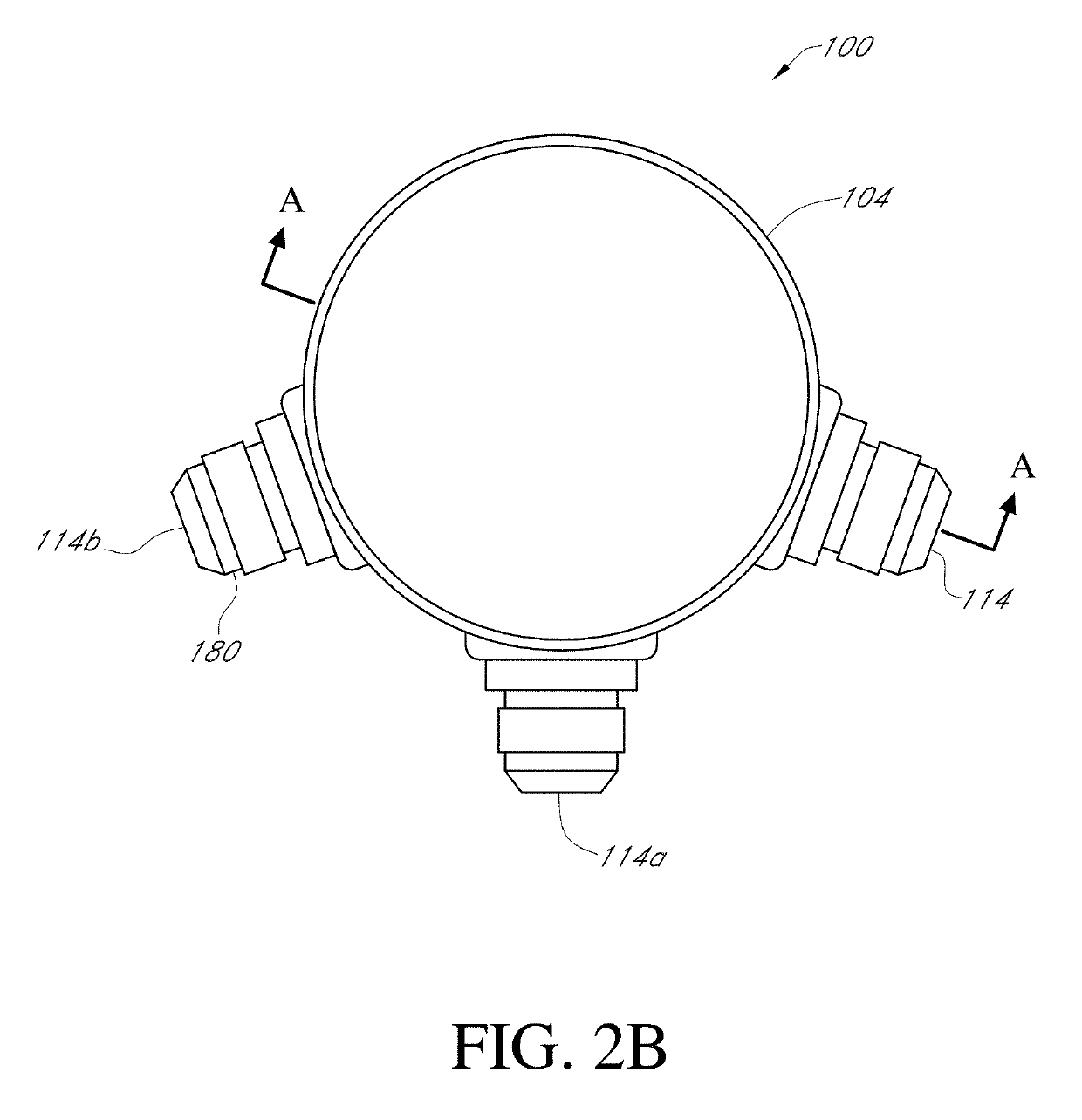Crankcase ventilation management devices, systems, and methods
a technology of ventilation management and crankcase, applied in crankcase ventillation, machines/engines, centrifuges, etc., can solve the problems of gas leakage past the piston ring, intake valve guide, seals at a heightened rate, supercharged or turbocharged engines, etc., and achieve the effect of adsorption flexibility
- Summary
- Abstract
- Description
- Claims
- Application Information
AI Technical Summary
Benefits of technology
Problems solved by technology
Method used
Image
Examples
Embodiment Construction
[0035]The various features and advantages of the systems, devices, and methods of the technology described herein will become more fully apparent from the following description of the embodiments illustrated in the figures. These embodiments are intended to illustrate the principles of this disclosure, and this disclosure should not be limited to merely the illustrated examples. The features of the illustrated embodiments can be modified, combined, removed, and / or substituted as will be apparent to those of ordinary skill in the art upon consideration of the principles disclosed herein.
A. Blow-By Gases
[0036]FIG. 1 illustrates the escape of blow-by gases BBG from a piston cylinder PC in an internal combustion engine E. Blow-by gases can include gases that escape from within the cylinder such as during the combustion C of fuel and the expansion of the cylinder by moving a piston P. The cylinder can be sealed by piston rings PR attached to the piston and engaged with a wall of the pist...
PUM
 Login to View More
Login to View More Abstract
Description
Claims
Application Information
 Login to View More
Login to View More - R&D
- Intellectual Property
- Life Sciences
- Materials
- Tech Scout
- Unparalleled Data Quality
- Higher Quality Content
- 60% Fewer Hallucinations
Browse by: Latest US Patents, China's latest patents, Technical Efficacy Thesaurus, Application Domain, Technology Topic, Popular Technical Reports.
© 2025 PatSnap. All rights reserved.Legal|Privacy policy|Modern Slavery Act Transparency Statement|Sitemap|About US| Contact US: help@patsnap.com



